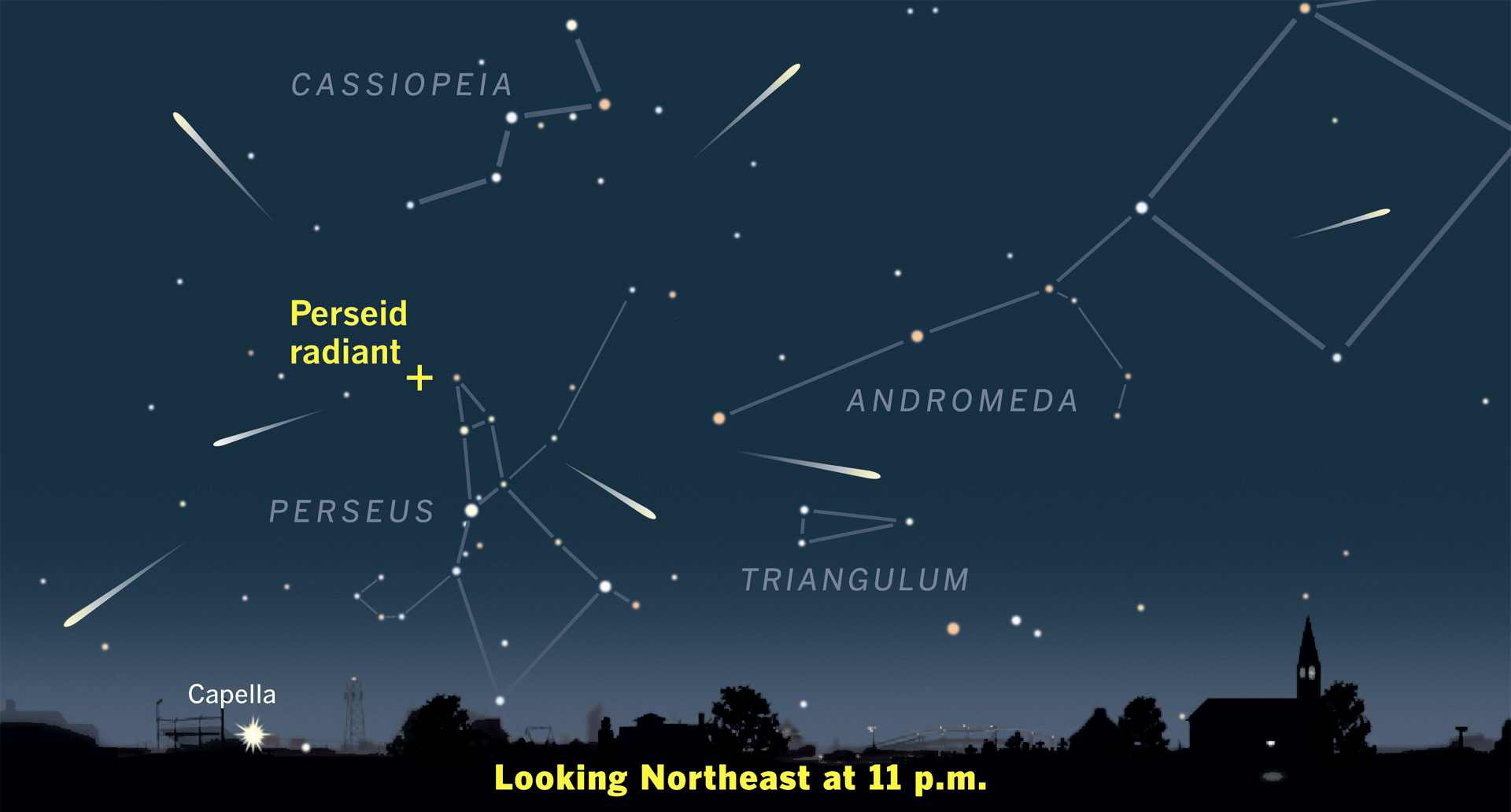What are Perseids meteors🌠and Swift-Tuttle?
The Perseids are bits & chunks of Comet Swift-Tuttle also known as Comet 109P. This 16-mile-long comet orbits the sun every 133 years. Although Swift-Tuttle won't be spotted again until 2125, every year when Earth🌎 comes across the path of comet Swift-Tuttle, a Perseid meteor shower occurs.
Succeeding Earth's encounter with its path, the comet debris left behind by the comet, most of which is no bigger than a grain of sand, burns 🔥 up in Earth's atmosphere. Thus creating stripes of light ⚡ in the dark sky. Meteors are pieces of comet debris that penetrate the Earth's atmosphere.
Let us explain the Perseid phenomenon in detail:
Possible size of Perseid meteors🌠:
The majority of the Perseids are no bigger than a grain of sand. Although rare but some Perseids can occupy the size of small stones or pebbles.
Possible weight of Perseid meteors🌠:
The bulk of visible meteors are created by particles that range in size from a small pebble and weigh less than 1-2 grams. Meteors that somehow reach Earth's surface are classified as 'Meteorites'.
Possible Number of Perseid Meteors🌠:
The Perseids typically emit more than 100 meteors per hour, many of which are bright, electric blue in color.

Interaction🧨 with our atmosphere:
The air in front of the meteor is compressed and heated to high temperatures, of thousands of degrees Celsius. Because most meteors are so small, some as small as a grain of sand, they disintegrate in the air. Smaller meteors vaporize, leaving a dazzling trail of light in the aftermath. Larger meteors may erupt as fireballs.
How fast is Perseid's🌠speed?
A Perseid meteor🌠 moves at an average speed of 36 miles/sec. The speed of 36 miles/sec corresponds to 57.936 km/sec. If compared with the speed of light, in empty space light travels 186,000 miles in one second. But the speed of the Perseid meteor🌠 is 36 miles/sec, in air not in empty space.
Cosmic velocity is the least speed required to escape the solar system's gravitational force. It is even faster than the cosmic velocity - which is approximately 16.7 km/sec.
Let's take a practical example of a car🚓 propagating with this speed.
A car moving at 36 miles/sec can pass about 23,226 stationary cars on the road in one hour. This means that a car moving at 36 miles/sec can pass about 6.451 stationary cars on the road in one second.
From this example, we can summarize Perseid's speed as:
36 miles per second is a speed so extreme and hectic,
You zoom past everything in sight,
Leaving behind a trail of light.
Thank You for reading this blog post about the Perseid Meteor shower in August 2023. Now it's time to sit behind & wait for the trailing light of Perseids. Happy Perseids!🤗🤗🤗







0 Comments